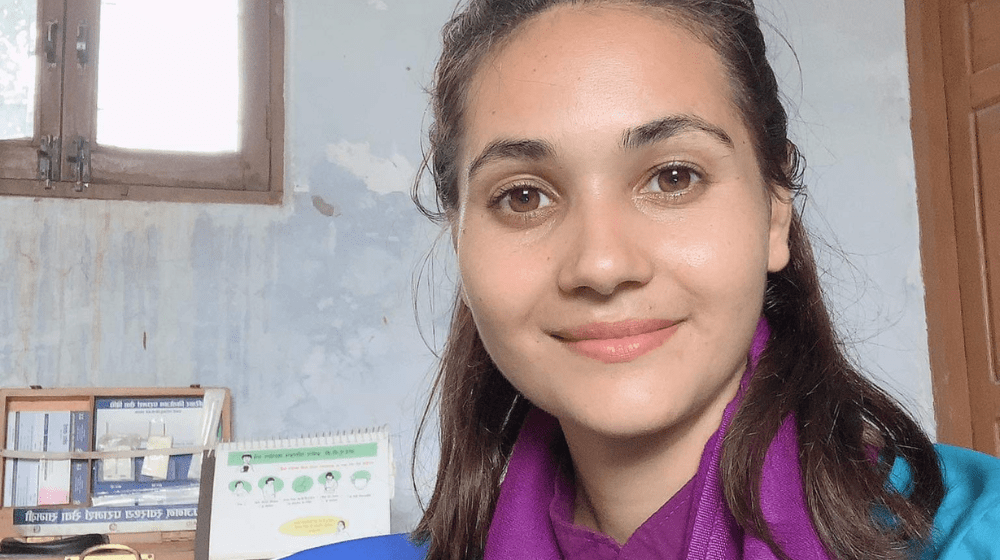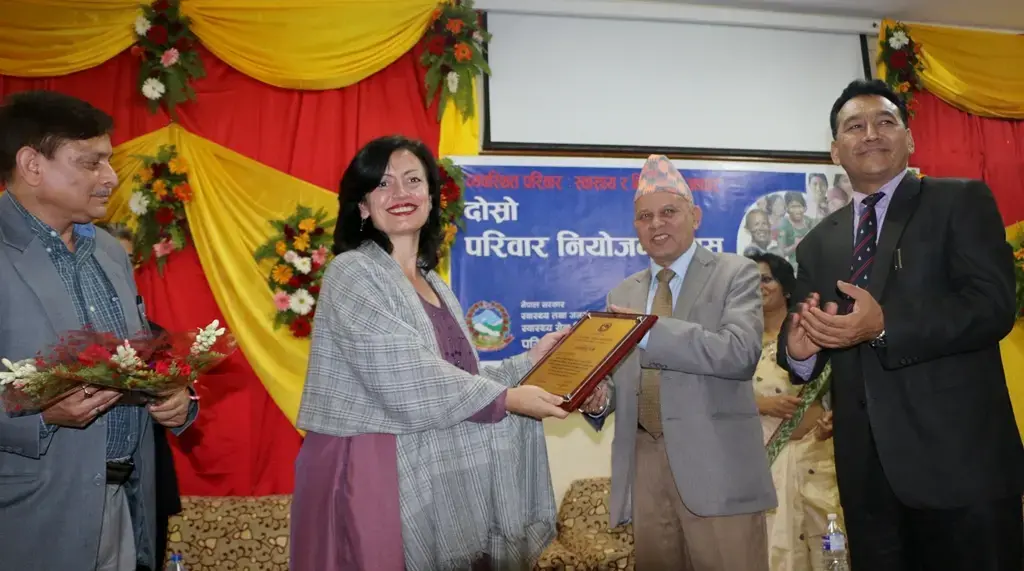“My mother conceived 22 times. She lost 18 babies to still birth either inside the womb or after giving birth. If only she had access to health services including family planning and counseling, my mother would not have had to endure so much. This is what motivated me to choose this profession.”
Awasthi, is a 28-year old midwife serving as an Auxiliary Nurse Midwife (ANM) in the Far Western region of Nepal in the Sudurpaschim Province.
Hailing from the Darchula District, Awasthi saw firsthand, how the lack of access to sexual and reproductive health (SRH) services can have serious and long lasting consequences not just on a woman’s body, but on the community as a whole. Growing up, she recalls that the mountainous area had no family planning clinic in the area and there were no places to refer women either, due to the lack of road access in the area. Moreover, lack of awareness about SRH rights made it harder for women to even demand such services to be in place in their locality.
This is what motivated Awasthi to join the medical profession.
Determined to make a difference, Awasthi pursued her higher education and qualified as a Staff Nurse and Midwife but due to lack of opportunities, she was forced to start work as an ANM.
Despite the lower salary and recognition, Awasthi continues her work serving communities from the Kanchapur District Health Post.
“The primary role of my job is to provide maternal and child health services that includes prenatal to postnatal services. I also make home visits to provide postnatal care to mothers and newborn babies. Apart from the challenge in reaching the homes due to the rocky road terrain, there is also a serious shortage in instruments and medicines in the health post. In an urban or central level I could have requested for a senior health personnel to come in if the case is complicated, but here I have to handle everything. It’ll take days just to get here.”
Awasthi also points out that the challenges have increased after the federalization as the Local Government is less aware about the necessity of health facilities, to even demand for more support.
“I remember one time, the baby was not positioned in a way for a normal birth so I referred the family to go to the nearest hospital. There is a temple en route to the referred health facility so they were reluctant to go as they believed that after the labor pain starts they should not cross such temples and so they refused to go despite my best efforts. Finally they were convinced and started to make their way but the labor pains were too strong so they came back and she ended up delivering the baby at the doorstep of the healthpost. I am so glad I was around and nothing bad happened.
There was another case where the parents were reluctant to go to the hospital, and lost their baby. This was before I studied midwifery, and I was not even trained on SBA (Skilled Birth Attendants) but there was no one else around so I had to refer them. To this day, I feel terrible thinking I could have saved the baby had I been professionally trained.”
From 1991 to 2016, the maternal mortality rate in Nepal declined by a staggering 72% — from 850 deaths per 100,000 live births to 239 in 25 years. But since then, progress has slowed due to a shortage of skilled birth attendants, weak referral systems and difficulty in accessing quality services.
The 2018 Right to Safe Motherhood and Reproductive Health Act guarantees women the right to necessary counseling and maternity services from a midwife. But in the context of rural Nepal, this may not always apply.
Currently, most maternity services in the country are provided by nurses and auxiliary nurse midwives who learn basic midwifery skills as part of their pre-service training, but they do not always have the expertise to manage challenging obstetric situations on their own. In order to strengthen the health workforce and overcome some of these challenges, the Government of Nepal has committed to create a new cadre of 10,000+ professional midwives by 2030. as part of its long-term strategy for improving the health of mothers and babies in the country.
For professional midwives to be deployed to meet this target, they would first need to be trained. The Ministry of Health and Population, working in close cooperation with the Nepal Nursing Council, Midwifery Society of Nepal (MIDSON), United Nations Population Fund (UNFPA) Nepal and the International Confederation of Midwives (ICM), decided to start by developing a three-year’s Bachelor’s in Midwifery. However, a few years ago there were very few academia willing to offer this course due to shortage in expertise to serve as professors and academic staff. In 2022, through continuous advocacy by MIDSON and UNFPA, there are now 5 academic institutes across Nepal that are offering professional midwifery courses.
Going from being an ANM to a midwife may be a professional step up, but in reality, midwives too face a great deal of challenges within the health sector as they are often not respected and not considered professional.
“Auxiliary nurse midwives and midwives serve in some of the most difficult situations. Yet, they face so many challenges not just as part of their work and the context they work in, but also from within the health sector fraternity. We need to be a voice for them and empower them so they will in turn feel more confident to respond to the needs of women and girls, particularly in rural Nepal. This is the only way we can also encourage more young people to join the professional cadre as well” says Laxmi Tamang, President of MIDSON.
Midwives are the backbone of women’s access to realize their reproductive rights. Often they are the only lifeline that families can have access to when there is no obstetrician and gynecologist present which is often the case across Nepal. Despite the challenging circumstances they work in, both Awasthi and Laxmi remain hopeful and committed to ensure that better-quality maternal and reproductive health services will always be available to women in rural Nepal.
*End*




